How to use Screen on Linux to Detach and Reattach your Terminal

Why Screen?
screen is this awesome software tool in Linux that provides you the ability to spring-up and use multiple shell sessions from a single ssh session. Screen essentially acts as a terminal multiplexer emulator that is packed with features (just look at the size of its man page, you'll know 😝)
A few key benefits of screen are:
- Leverage the use of multiplexer to create multiple shell windows from a single shell SSH session
- Re-establish access and control of the shell session through network disruptions
- Ability to disconnect and re-connect to a shell session from any system
- Ability to daemonize a session to keep a long-running process and attach to the session whenever needed
Honestly, the above ☝ are just a few examples. There are many
How to install it?
It is most likely already have screen installed on your system. To check if you already have it installed you can use the which command to inspect the path of screen on your system.
which screen
#output
/usr/bin/screen
If you don't have screen, then you can easily install it using yum on CentOS
sudo yum install screen
or on Debian using apt like
sudo apt install screen
or on Manjaro using pacman like
sudo pacman -Sy screen
or on Fedora using dnf like
sudo dnf install screen
Once, you have successfully installed it you can check using the which command again. Alternatively, you can run the screen command
screen
It should prompt you a new window within the screen
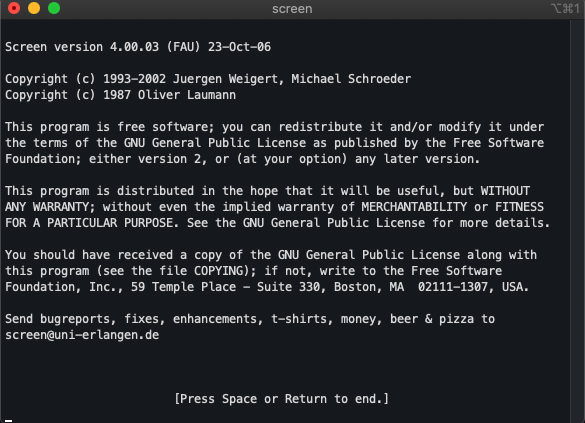
How to use it?
Using Sessions
To get started just use your command line and simply type as shown below:
screen
You'll see a page of legal information. You can now press Space or Enter to go to the command prompt.
🤔 Hmmm, you seem to have returned to you your normal session and nothing seems to have happened. But surprise-surprise, you're now running a shell inside your screen multiplexer emulator.
Let's get testing by running a long-running script on the session. Let's download some bug file
wget https://download.geofabrik.de/europe-latest.osm.pbf
Now our download will begin, and the progress will be display on the screen.
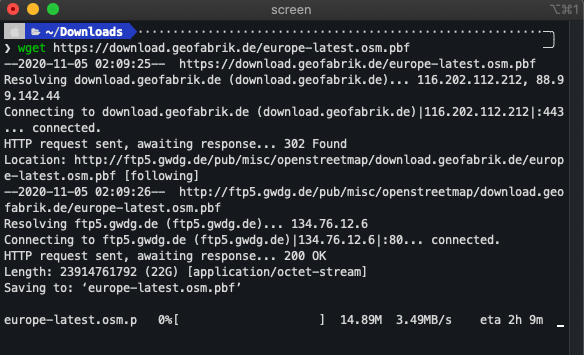
Now, we are going to detach from the session using Clrl+A and then press d.

now lets list out the screen windows using the -ls (list) option
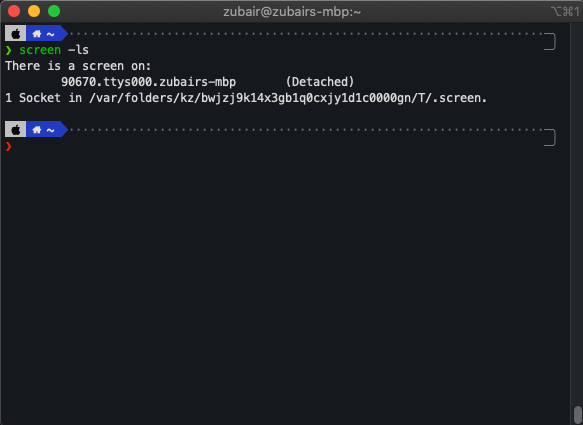
We are can use the -r (reattach) option and the number of the session to reattach to it
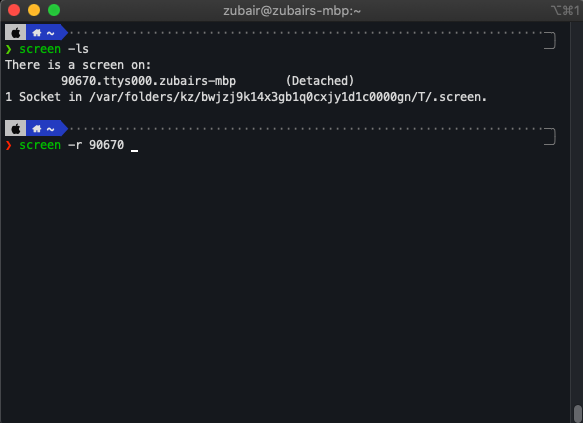
And just like that, you're back working on your download. 😄
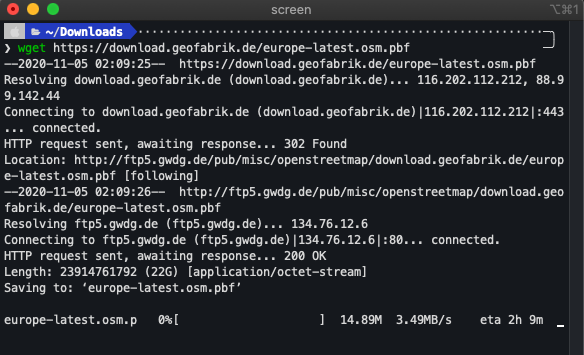
You can always exit from a screen session by just typing the exit command as you would do in a typical session.
exit
If you're not comfortable using numbered sessions and would like some semantic name for them you can do use using the -S (session name) option.
screen -S bigassDownload
Appropriately our command to reattach will now be leveraging the name of the session that we had quite some creatively given
screen -r bigassDownload
Recap
- On the terminal, type
screen - Use Ctrl+a + d to detach from the screen session
- Reattach to screen session by typing
screen -r <ID> - Start a named session using
screen -S <name> - Reattach to a named screen session by typing
screen -r <name>
Conclusion
My fellow coders, programmers, and wannabe hackers; we just learn how to use screen on Linux. Now you can start using the utility and go-crazy impressing people with your nifty terminal skills.
You can also personalize your screen utility by using a .screenrc file. To learn about the various customization options you can follow the Screen User's Manual.
Happy Grizzly Coding! 🐻

Related Posts

What's New in Node.js 24 (And How to Upgrade Your Codebase Smoothly)
Node.js 24 is here with game-changing features like V8 13.6, Float16Array, explicit resource management, WebAssembly Memory64, and npm 11. Learn what's new and how to upgrade smoothly.
Use Hook in React 18
This blog post focuses on the new experimental feature in React 18 called the use hook. It explains how the use hook can be used to create custom hooks that can be reused across different components, simplifying state management and making code more modular.
Optimal SEO Performance for NextJS
In this blog post we'll explore how Next.js can help you optimize your website for search engines From server-side rendering to automatic code splitting we will cover all the features that make Next.js a powerful tool for SEO optimization